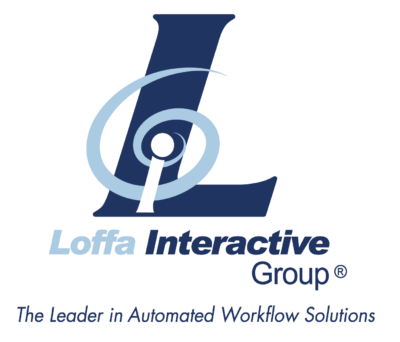Optimizing T+1 Settlements: Loffa Interactive’s Response to Current Delays
T+1 Transition Woes: How Loffa Interactive Eases the Settlement Process
 The switch to a T+1 settlement cycle for securities trading in the U.S. market introduces a mix of opportunity and challenge. As the dust settles on this faster pace, concerns around an uptick in trade failures loom large. Estimates from ValueExchange suggest a jump in failure rates from 2.9% to 4.1% with the advent of T+1.
The switch to a T+1 settlement cycle for securities trading in the U.S. market introduces a mix of opportunity and challenge. As the dust settles on this faster pace, concerns around an uptick in trade failures loom large. Estimates from ValueExchange suggest a jump in failure rates from 2.9% to 4.1% with the advent of T+1.
In this swiftly changing scenario, Loffa Interactive stands out as a beacon of trust for financial institutions, providing top-tier tech solutions to ease the T+1 transition while keeping compliance in check. With a two-decade track record with the Wall Street elite, Loffa Interactive’s commitment to security and operational finesse is well-established.
Key Solutions Simplifying the T+1 Transition
Loffa Interactive’s arsenal, featuring Freefunds Verified Direct (FVD) and the Prime Broker Interactive Network (PBIN), is particularly key in deciphering the T+1 settlement riddle. Let’s delve into how these innovations make a difference:
Freefunds Verified Direct (FVD): A Closer Look
FVD cuts through the red tape around managing Letters of Free Funds. It ensures brokers can swiftly verify balances and comply with Regulation T for free fund trading in cash accounts. As we wheel into the T+1 era, FVD emerges as an indispensable ally in keeping up with stringent financial regulations amidst tighter deadlines.
Prime Broker Interactive Network (PBIN): Spotlight on Streamlining
 PBIN tosses a lifeline to firms wrestling with F1SA, SIA-150, and SIA-151 forms vital for prime brokerage and clearance agreements. This platform doesn’t just simplify these cumbersome processes; it cements adherence to regulations, making it a cornerstone for firms aiming to thrive in a faster settlement landscape.
PBIN tosses a lifeline to firms wrestling with F1SA, SIA-150, and SIA-151 forms vital for prime brokerage and clearance agreements. This platform doesn’t just simplify these cumbersome processes; it cements adherence to regulations, making it a cornerstone for firms aiming to thrive in a faster settlement landscape.
The Impact on Prime, Executing, and Clearing Brokers
For prime, executing, and clearing brokers, the stakes are high. Let’s dig into the two most impactful facets of Loffa Interactive’s offerings:
Enhanced Regulatory Compliance
The leap to T+1 demands agile regulatory compliance. Loffa’s tools are game-changers here, particularly for prime brokers who are in the thick of managing complex transactions and navigating the regulatory maze. FVD and PBIN not only streamline operations but ensure these brokers stay on the right side of the law amid the whirlwind of change.
Operational Efficiency Boost
Speed is of the essence in the T+1 world. For executing and clearing brokers, efficiency is not just nice to have; it’s vital. PBIN and FVD turbo-charge these brokers’ ability to process transactions swiftly and accurately, minimizing the risk of trade failures even as the settlement timelines squeeze.
As we forge ahead into the intricacies of T+1 settlement, Loffa Interactive’s commitment to navigate these waters alongside its clients stands out. Leveraging their renowned expertise and technological prowess, financial institutions can transition to the quicker settlement cycle while upholding compliance and operational excellence.
 In conclusion, the move to T+1, with its mix of challenges and opportunities, requires a navigator like Loffa Interactive. Their proven track record in innovation and trust positions them as ideal partners for financial firms aiming to capitalize on the new era of securities trading.
In conclusion, the move to T+1, with its mix of challenges and opportunities, requires a navigator like Loffa Interactive. Their proven track record in innovation and trust positions them as ideal partners for financial firms aiming to capitalize on the new era of securities trading.


 The financial sector finds itself at a significant juncture as companies deliberate the enforcement of a full-time office return, specifically for roles governed by the Financial Industry Regulatory Authority (FINRA). With Barclays reportedly considering a five-day office week, this shift prompts a crucial dialogue on the post-pandemic work environment.
The financial sector finds itself at a significant juncture as companies deliberate the enforcement of a full-time office return, specifically for roles governed by the Financial Industry Regulatory Authority (FINRA). With Barclays reportedly considering a five-day office week, this shift prompts a crucial dialogue on the post-pandemic work environment. Strategic Compliance Solutions
Strategic Compliance Solutions
 In the fast-moving world of financial services, staying ahead of regulatory compliance is more than a necessity—it’s an art. Loffa Interactive Group, with its rich history of over twenty years serving elite Wall Street entities, stands at the vanguard of this domain. They’re not just another vendor; they’re the architects behind some of the most innovative tech solutions that ease compliance burdens and safeguard adherence to complex regulatory frameworks.
In the fast-moving world of financial services, staying ahead of regulatory compliance is more than a necessity—it’s an art. Loffa Interactive Group, with its rich history of over twenty years serving elite Wall Street entities, stands at the vanguard of this domain. They’re not just another vendor; they’re the architects behind some of the most innovative tech solutions that ease compliance burdens and safeguard adherence to complex regulatory frameworks. At the core of Loffa Interactive’s innovative arsenal lie two standout products: Freefunds Verified Direct (FVD) and the Prime Broker Interactive Network (PBIN). These tools aren’t merely additions to the toolbox—they’re game-changers that redefine how compliance processes are managed, aligning seamlessly with the stringent security and operational standards that the financial industry demands.
At the core of Loffa Interactive’s innovative arsenal lie two standout products: Freefunds Verified Direct (FVD) and the Prime Broker Interactive Network (PBIN). These tools aren’t merely additions to the toolbox—they’re game-changers that redefine how compliance processes are managed, aligning seamlessly with the stringent security and operational standards that the financial industry demands. PBIN: Simplifying Prime Brokerage Complexities
PBIN: Simplifying Prime Brokerage Complexities The landscape for prime brokers is fraught with navigational hazards—from regulatory compliance to operational efficiencies. Here, PBIN emerges as a lighthouse, guiding prime brokers through the regulatory fog with its simplified management of prime brokerage agreements and clearance processes. It ensures that the prime brokers can focus on their core activities while staying compliant and efficient.
The landscape for prime brokers is fraught with navigational hazards—from regulatory compliance to operational efficiencies. Here, PBIN emerges as a lighthouse, guiding prime brokers through the regulatory fog with its simplified management of prime brokerage agreements and clearance processes. It ensures that the prime brokers can focus on their core activities while staying compliant and efficient.